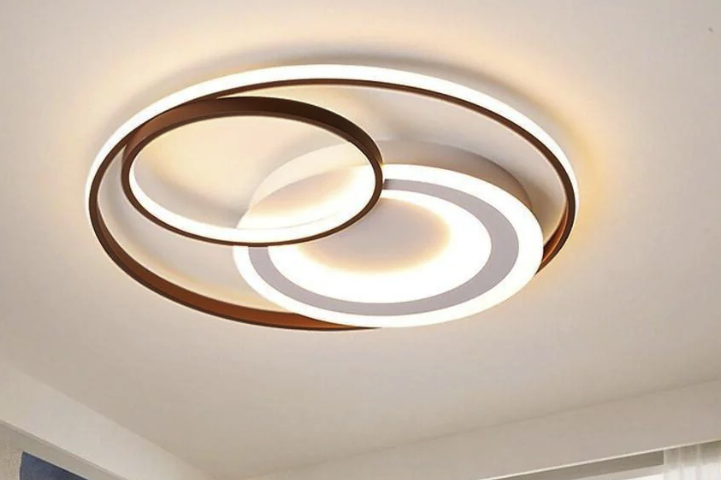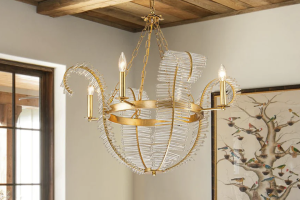The living room serves as the heart of a home, a space where families gather, friends converse, and memories are made. As such, the ambiance of this area is crucial, and one of the most significant contributors to that atmosphere is ceiling lighting. The right lighting can transform a mundane space into a warm, inviting environment, enhancing both functionality and aesthetics.
Ceiling lighting not only illuminates the room but also plays a pivotal role in defining the overall style and character of the living area. In recent years, there has been a growing awareness of how lighting affects mood and perception. Studies have shown that well-lit spaces can improve productivity and well-being, while poorly lit areas can lead to feelings of discomfort or even depression.
Therefore, understanding the various types of ceiling lighting available and how they can be effectively utilized in a living room setting is essential for homeowners looking to create a harmonious and welcoming environment.
Types of Living Room Ceiling Lighting
When it comes to ceiling lighting in the living room, there are several types to consider, each serving different purposes and contributing uniquely to the overall design. The most common types include chandeliers, flush mounts, pendant lights, and recessed lighting. Chandeliers are often seen as the epitome of elegance and sophistication.
They come in various styles, from traditional crystal designs to modern geometric shapes, making them versatile enough to fit into any decor theme. A well-placed chandelier can serve as a focal point in the room, drawing the eye upward and adding a touch of luxury. Flush mount lights are another popular option, particularly for spaces with lower ceilings.
These fixtures sit snugly against the ceiling, providing ample light without taking up too much visual space. They are available in a myriad of designs, from sleek and contemporary to ornate and vintage-inspired. Pendant lights, on the other hand, hang from the ceiling and can be used individually or in clusters to create a dramatic effect.
They are particularly effective over coffee tables or seating areas, where they can provide both task lighting and ambiance. Recessed lighting offers a more subtle approach; these fixtures are installed into the ceiling itself, providing a clean look while allowing for flexibility in directing light where it is needed most.
Choosing the Right Living Room Ceiling Lighting for Your Space
Selecting the appropriate ceiling lighting for your living room involves considering several factors, including the size of the room, the height of the ceilings, and the existing decor. A large living room with high ceilings may benefit from a grand chandelier or multiple pendant lights to fill the vertical space effectively. In contrast, smaller rooms or those with lower ceilings might require flush mounts or recessed lighting to avoid overwhelming the space.
Another critical aspect to consider is the color temperature of the bulbs used in your fixtures. Warmer tones (around 2700K) create a cozy atmosphere ideal for relaxation, while cooler tones (above 3000K) can enhance focus and energy levels. Additionally, dimmable options allow for greater control over brightness levels, enabling you to adjust the lighting according to different activities or times of day.
It’s also essential to think about layering your lighting; combining ambient, task, and accent lighting can create depth and dimension in your living room.
Statement Pieces: Unique Living Room Ceiling Lighting Ideas
For those looking to make a bold statement with their ceiling lighting, there are countless unique options that can serve as conversation starters. Artistic fixtures such as sculptural chandeliers or oversized pendant lights can add an element of drama to your living room. For instance, a large, abstract metal sculpture hanging from the ceiling can serve as both a light source and a piece of art, captivating guests’ attention as soon as they enter the room.
Another innovative idea is to incorporate natural elements into your ceiling lighting design. Fixtures made from materials like wood or rattan can bring warmth and texture into your living space while maintaining an organic feel. Additionally, using colored glass or stained glass in your light fixtures can cast beautiful patterns on walls and ceilings when illuminated, creating an enchanting atmosphere that changes throughout the day as natural light shifts.
Modern and Minimalist Living Room Ceiling Lighting
Modern and minimalist design philosophies emphasize simplicity and functionality without sacrificing style. In this context, ceiling lighting Lights often features clean lines and understated elegance. Fixtures made from materials like brushed metal or matte finishes are popular choices that align with this aesthetic.
For example, a sleek linear pendant light can provide ample illumination while maintaining a low profile that complements minimalist decor. Recessed lighting is another staple in modern living rooms, offering a streamlined look that allows architectural features to shine without distraction. This type of lighting can be strategically placed to highlight artwork or architectural details while providing general illumination throughout the space.
Additionally, smart lighting systems have gained popularity in modern homes; these allow homeowners to control brightness levels and color temperatures through mobile apps or voice commands, further enhancing the minimalist approach by reducing clutter from traditional switches.
Traditional and Timeless Living Room Ceiling Lighting
In contrast to modern styles, traditional living room ceiling lighting often embraces ornate designs and classic materials that evoke a sense of history and craftsmanship. Chandeliers adorned with crystals or intricate metalwork are quintessential elements of traditional decor. These fixtures not only provide light but also serve as stunning focal points that reflect elegance and sophistication.
Wall sconces are another traditional option that complements ceiling fixtures beautifully. Placed strategically around the room, they can enhance the overall lighting scheme while adding layers of warmth and charm. Vintage-inspired pendant lights with Edison bulbs can also evoke nostalgia while providing a contemporary twist on classic designs.
The key to achieving a timeless look lies in selecting pieces that resonate with personal style while harmonizing with other elements in the room.
Tips for Installing and Maintaining Living Room Ceiling Lighting
Proper installation and maintenance of ceiling lighting are crucial for ensuring safety and longevity. When installing new fixtures, it’s essential to follow manufacturer guidelines carefully and consider hiring a professional electrician if you’re unsure about electrical work. Ensuring that fixtures are securely mounted and that wiring is correctly connected will prevent potential hazards such as short circuits or fire risks.
Maintenance is equally important; regular cleaning of light fixtures helps maintain their appearance and efficiency. Dust accumulation can dull finishes and reduce light output over time. For chandeliers or intricate fixtures, using a soft cloth or feather duster can help remove dust without damaging delicate components.
Additionally, checking bulbs periodically for burnout ensures that your living room remains well-lit at all times.
Enhancing Your Living Room with Ceiling Lighting
Ceiling lighting is an integral aspect of living room design that goes beyond mere illumination; it shapes the mood, enhances decor, and defines spaces within your home. By understanding the various types of ceiling lighting available and how they can be tailored to fit your specific needs and style preferences, you can create an inviting atmosphere that reflects your personality while serving practical purposes. Whether you opt for statement pieces that draw attention or minimalist designs that blend seamlessly into your decor, thoughtful selection and placement of ceiling lighting will undoubtedly elevate your living room experience.

